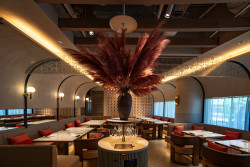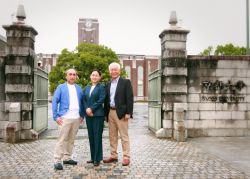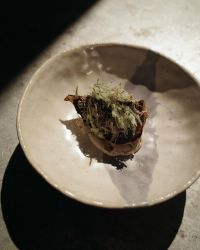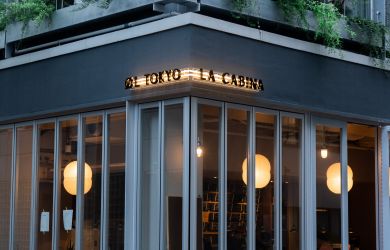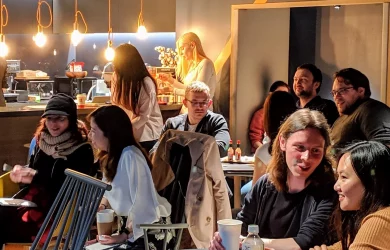
Originally published on metropolis.co.jp on August 2009
 Much of Ginza’s nightlife is on side streets like the ultra-expensive Namiki Dori, with its hostess clubs and exclusive expense account-only restaurants. But one block over on Suzuran Dori is a myriad of cheaper drinking holes and eateries clustering toward Shimbashi. Many of these spots are hard to find, but none is more hidden than Ten Asa, one of my favorite tempura restaurants and a quintessential Ginza experience.
Much of Ginza’s nightlife is on side streets like the ultra-expensive Namiki Dori, with its hostess clubs and exclusive expense account-only restaurants. But one block over on Suzuran Dori is a myriad of cheaper drinking holes and eateries clustering toward Shimbashi. Many of these spots are hard to find, but none is more hidden than Ten Asa, one of my favorite tempura restaurants and a quintessential Ginza experience.
You approach Ten Asa down a dark cleft, barely shoulder-wide, between two multistory buildings. Walk past blue plastic garbage cans, strumming air conditioning units, ragged mops, perhaps an alley cat or two, and eventually you’ll spot the glow of a lighted sign at a noren-curtained entrance. Slide open the door and you’ll find a lovely, traditionally appointed restaurant with an L-shaped counter seating nine.
Ten Asa serves a fantastic lunch, the tempura teishoku set (¥2,700) or the less expensive tendon box lunch set (¥1,600), but to appreciate the full tempura experience, you need to try a dinner course such as the Yumei (¥6,800), with its eight tempura tidbits.
Arriving at 5pm on a recent evening, I have my choice of seats, but soon other customers drift in: a grey-haired gent in an elegant brown kimono, then a pair of businessmen in shirts still brilliantly white and crisply starched.
The course features seasonal vegetables, fish and other delicacies, lightly battered and crisply fried, interspersed with several other dishes, including a starter, a small salad, then rice, miso soup, pickles and, finally, a dessert.
Tempura marries well with a cool glass of chardonnay (¥1,000) or a flask of chilled sake like the rich and mellow junmaishu Dai-shichi (¥2,800), but most customers order a cold bottle of lager (¥850). With your drink, you’ll get a few deep-fried hone sembei (“bone crackers”), including the cord-like backbone of an anago eel, salted and crunchy, tied into a pretzel; a crisp ribbon of kisu fish backbone; and two sets of delicate shrimp legs from the crustaceans you’ll soon be eating.
At a leisurely pace, each item is placed like a work of art on the folded sheet of pristine white paper in front of you: baby corn, complete with silk, cooked to a popcorn-like nuttiness; a shiitake mushroom as thick as a rib eye steak and just as meaty; megochi (flathead fish) with firm tasty flesh; a tiny eggplant; a golden onion, the size of a ping pong ball, sliced in half. Just add a touch of the Okinawan sea salt, says the chef.
A woman in a deep blue kimono glides in and sits next to the grey-haired gent. She is of a certain age too—her coiffed raven-black hair shines. Her crimson nails click on the beer bottle as she pours him a fresh glass. Soon they are engaged in lilting conversation.
Next to me another businessman enjoys his tempura while reading a book on Buddhist statues. Dessert comes—a scoop of deep pink plum sherbet, flecked with ume flesh, and a cup of jade green sencha.
The kimono couple laugh. A lover’s tryst? Who knows? Who cares? It’s Ginza after all.
